Are you three-dimensional? Microtask spatial thinking
Have fun: three identical cylinders, longer than the diameter, mutually perpendicularly intersect their axes at one point.
The same in other words: the axes of coordinates were made thick-fat, round:
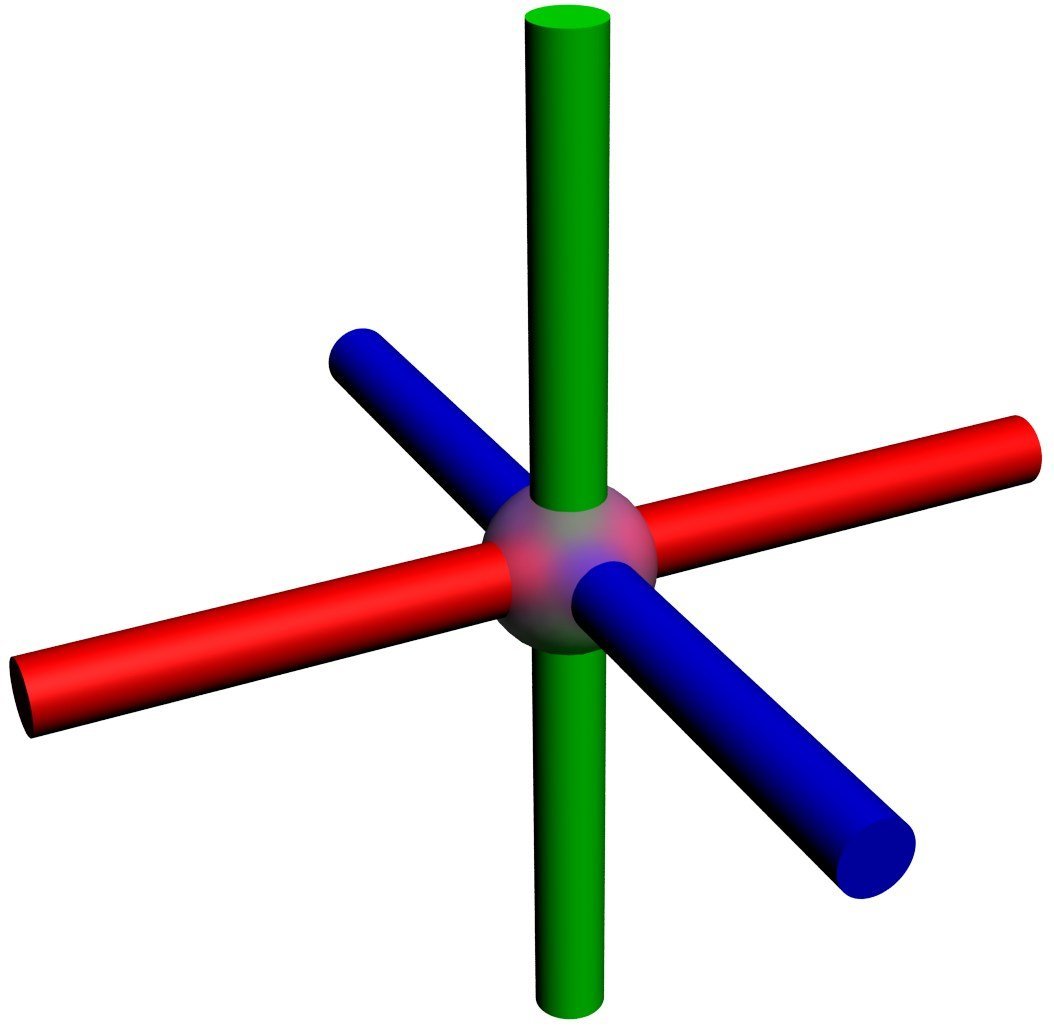
')
?: not using software and reference books - draw by hand or briefly describe the shape of the intersection with words (hidden by the ball in the figure above).
Obviously, no additional knowledge or trained skills are required to answer - if a person understands the words “cylinder” and “perpendicular” - that is enough.
For the impatient or self-confident - under the spoiler of the picture-tips, and even further inside - the answer. Hidden, so as not to interfere to think.
This is “how not to sew a soccer ball” - to the question how does “3d” differ from spatial thinking and whether it is necessary to teach it in school .
According to my observations, this seemingly simplest task is like from the “Bromberg memorandum”: “people will be divided ... according to an unknown sign to us ... into two strongly unequal parts ...” - for people older than 12 years, the result does not depend much on anything — and subjects of education, gender, age, hobby, etc. - The% of respondents correctly are very small and equipolar. That does not interfere with living it is not mastered. And those who understand the work of the parts of the shuttle of a sewing machine, knitting machine, axial internal combustion engine, roller shutter or kinematics of the airbus chassis are piece-specific people, special, there is no need for humanity. But even to them, it is easier to look at the flat scheme in the metro than to imagine the intricacies of the transition tunnels in the center.
Do not need spatial 3d man in the street. Unlike, for example, financial or (mat) statistical literacy.
Very interesting is the% of habra people who answered correctly right away, and the correlation with them is something, but curiosity is idle.
Well, a small survey, because I have prof. deformation:
UPD - PS I don’t know the name of this figure, but who imagines it for myself is usually phrases
To draw by hand, in my opinion, not an artist is unrealistic.
UPD2 - as unlocked - added polls
The same in other words: the axes of coordinates were made thick-fat, round:

')
?: not using software and reference books - draw by hand or briefly describe the shape of the intersection with words (hidden by the ball in the figure above).
Obviously, no additional knowledge or trained skills are required to answer - if a person understands the words “cylinder” and “perpendicular” - that is enough.
For the impatient or self-confident - under the spoiler of the picture-tips, and even further inside - the answer. Hidden, so as not to interfere to think.
open hint
Drawing in three projections. H-hell it's not a ball / sphere it turns out.
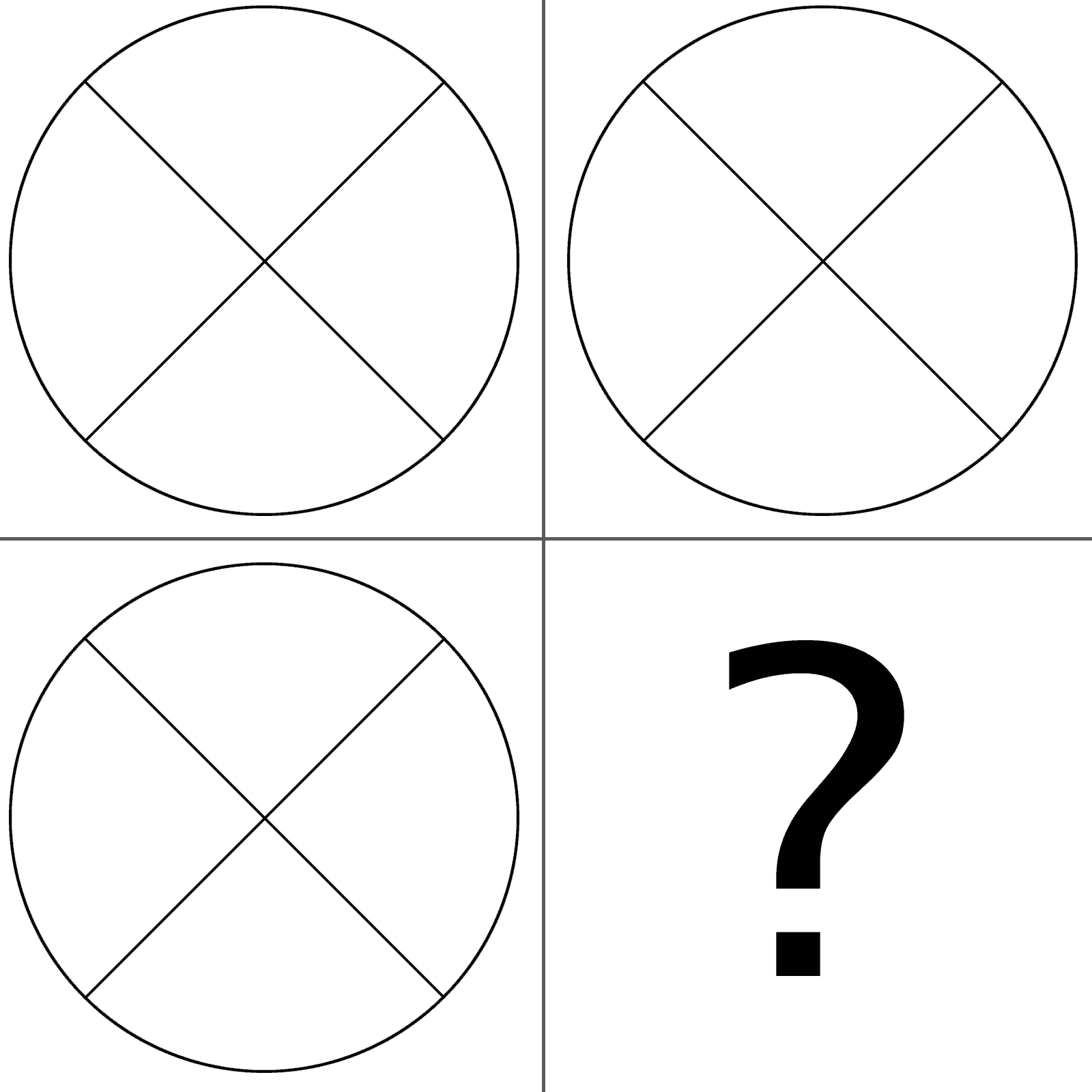
I didn’t take much trouble with this task, but at this moment almost everything is puzzling - what a shape - all three projections are round, but not a ball? And the holes / grooves like should not be ...
All the pictures are further to the very end - purely for clarity of presentation, to whom the form is completely clear - you can not tear it off, there is nothing interesting there.
Intermediate positions did not insert, but they are all there - if necessary - inserted.

I didn’t take much trouble with this task, but at this moment almost everything is puzzling - what a shape - all three projections are round, but not a ball? And the holes / grooves like should not be ...
hint2 - general view from the outside, without a cut-off yet

ANSWER - in halftones
(if someone tells you how to deploy it on the whole screen, and not into one narrow newspaper column - I will gladly redo it, what about the layout here ...)
"So here you are, spherical cube - cubic ball"
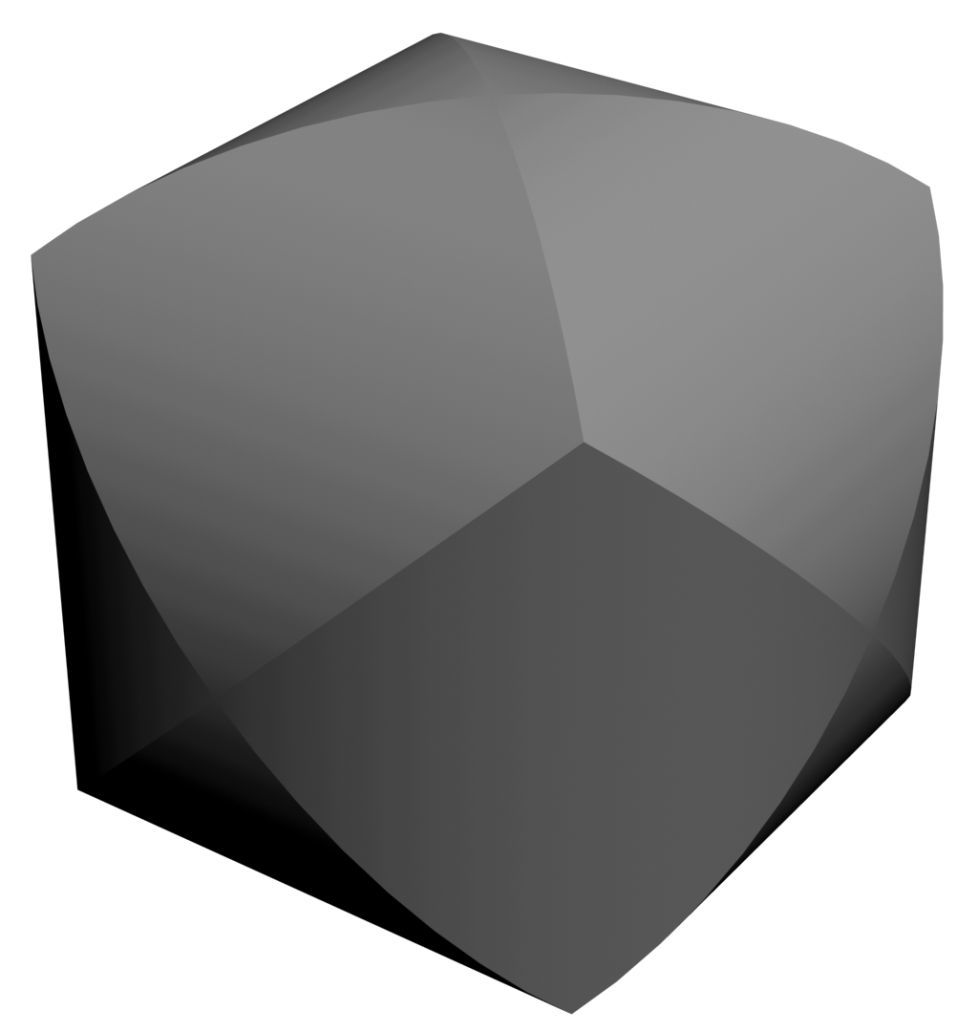
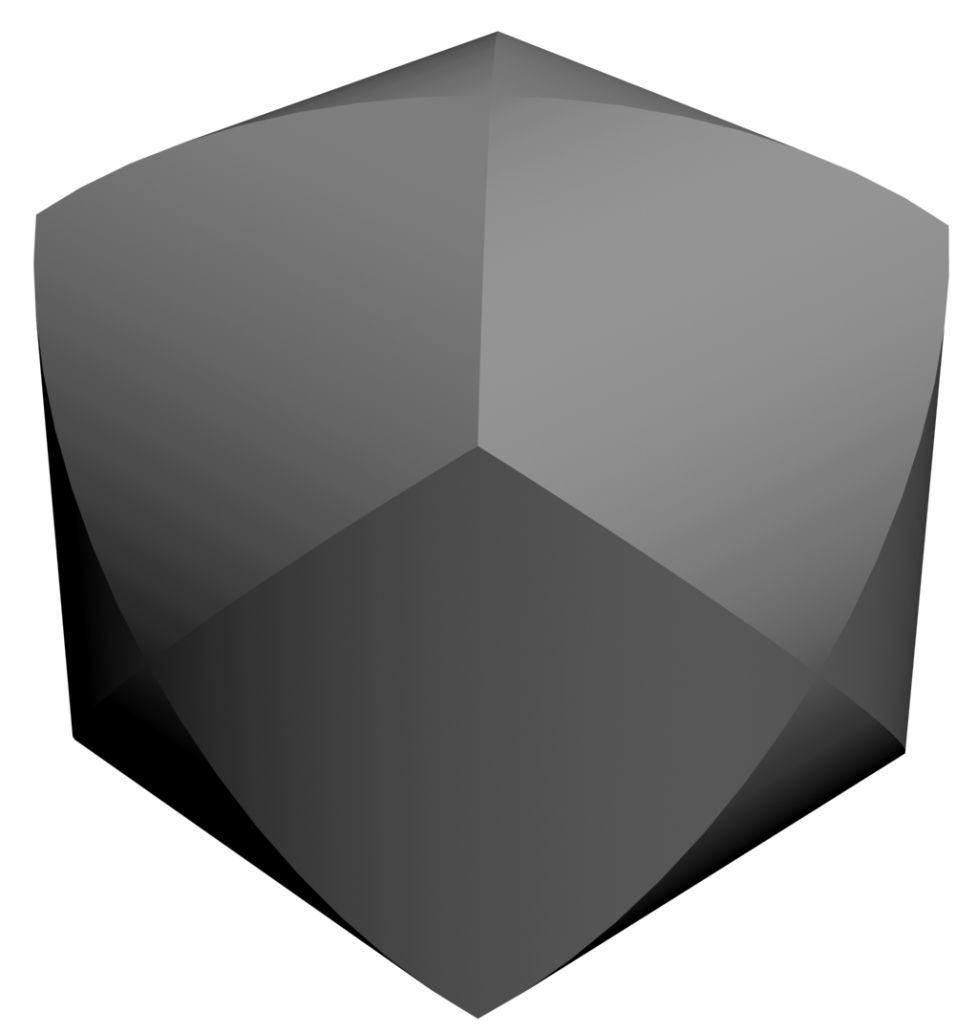
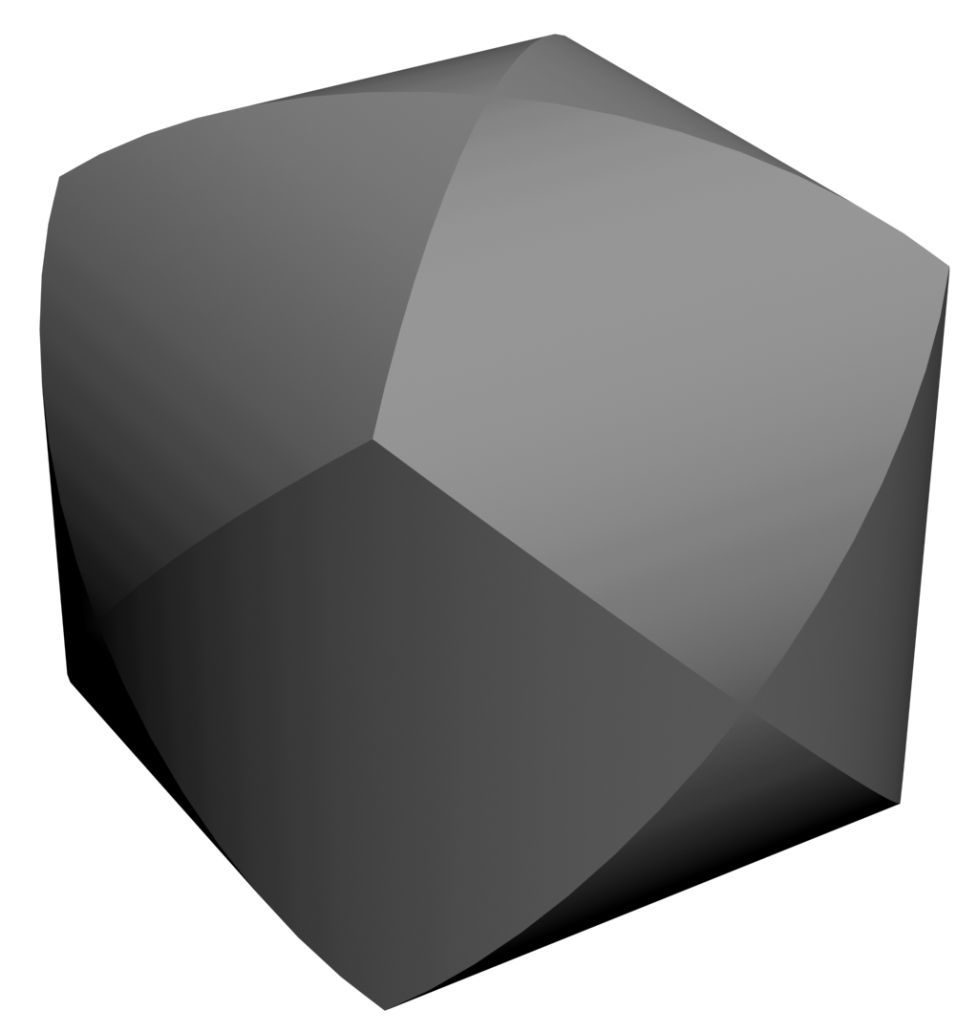
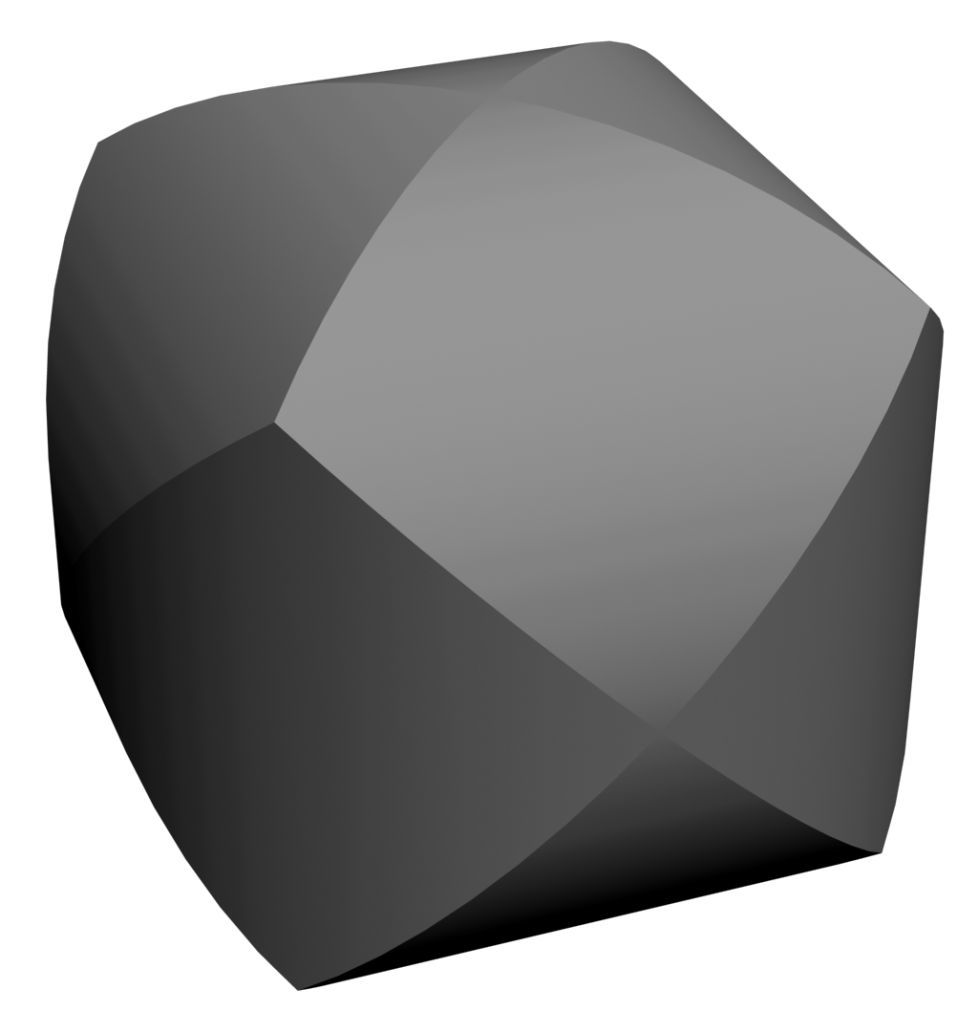
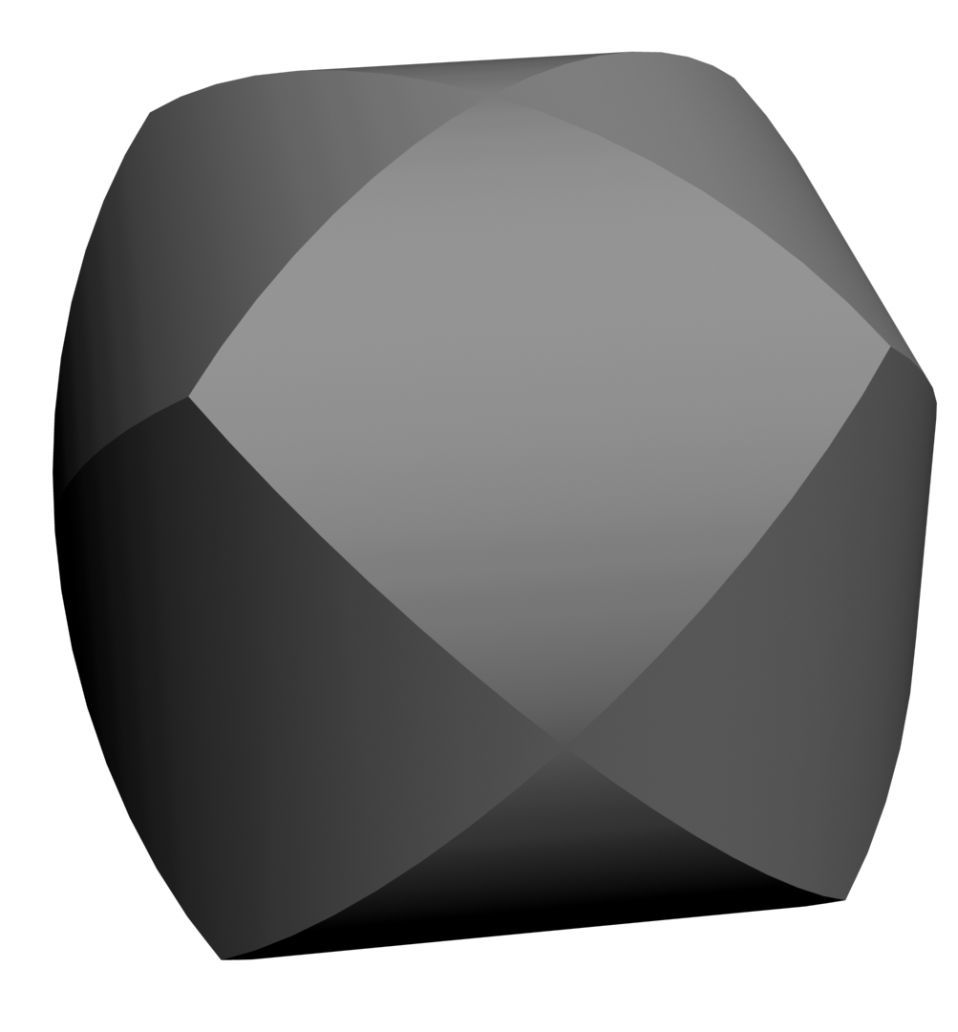
"So here you are, spherical cube - cubic ball"





ANSWER - in color



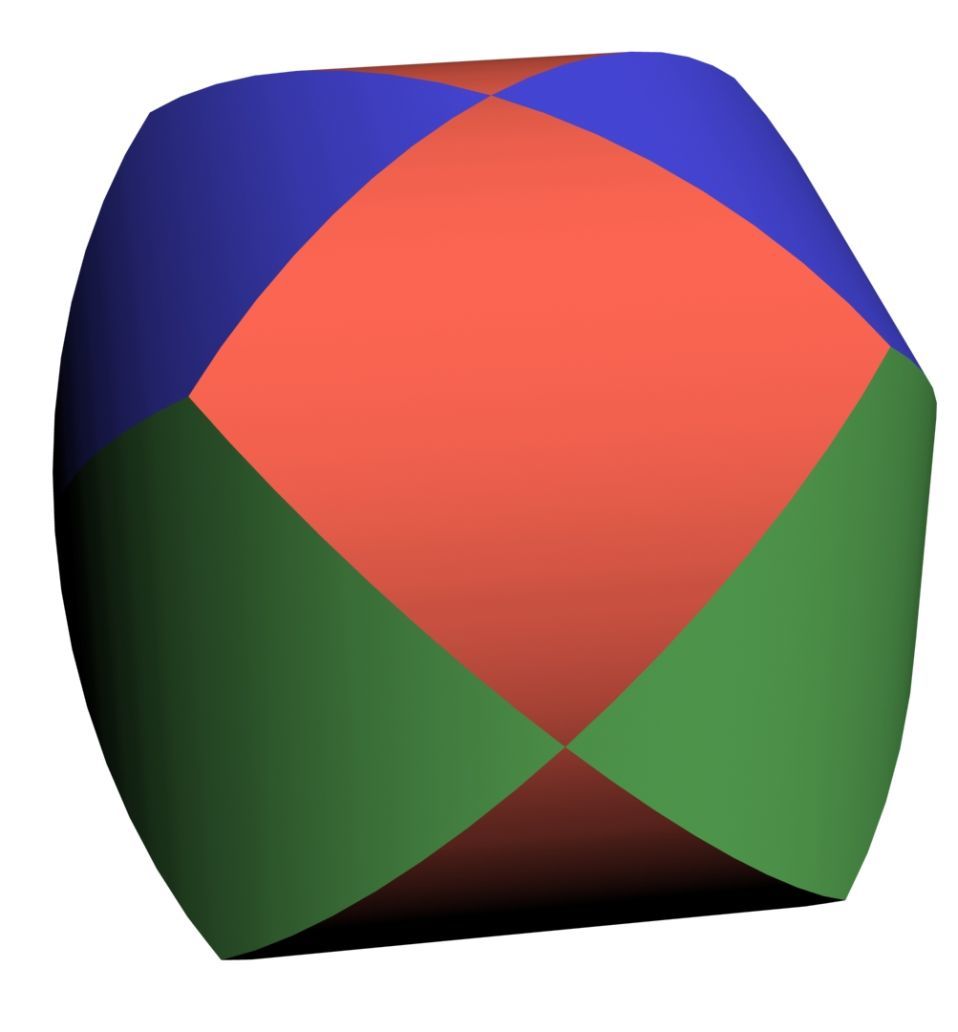





All the pictures are further to the very end - purely for clarity of presentation, to whom the form is completely clear - you can not tear it off, there is nothing interesting there.
Intermediate positions did not insert, but they are all there - if necessary - inserted.
removed the polish and added those circles from the projections
The color of the circle is from “its” cylinder:
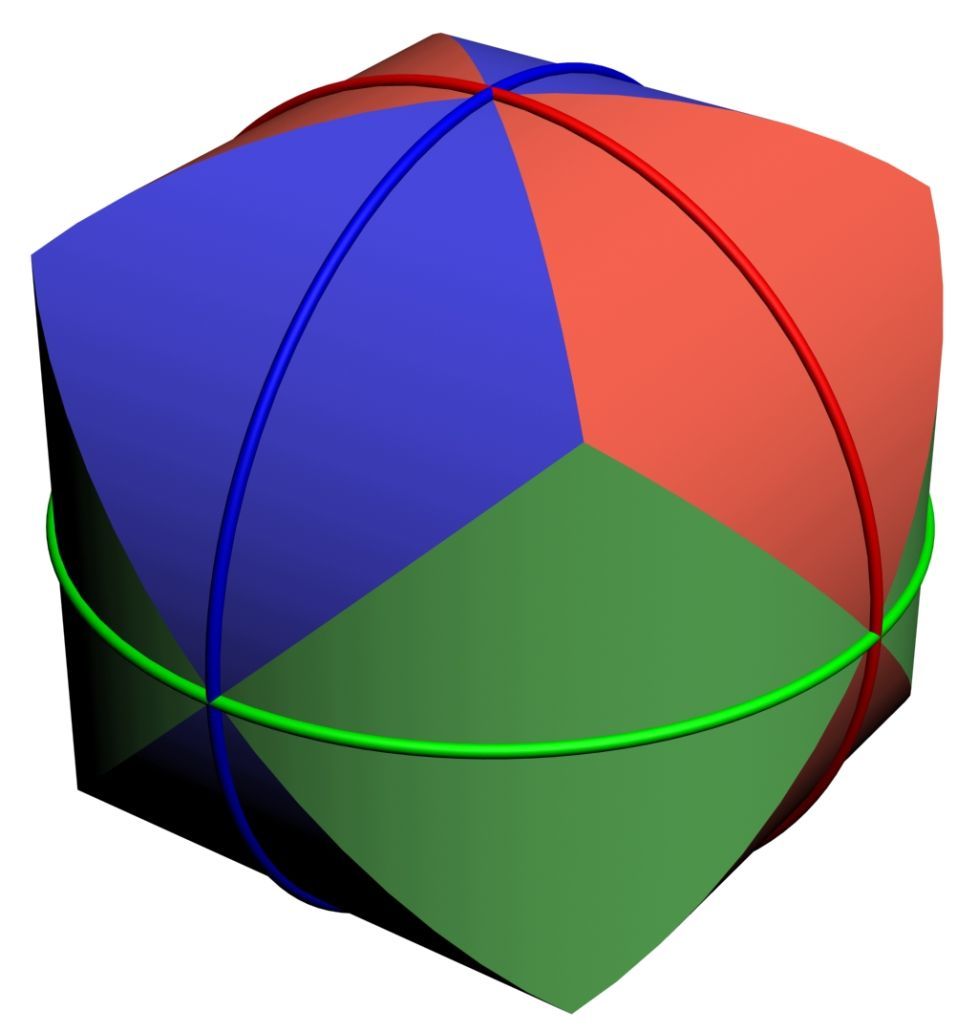
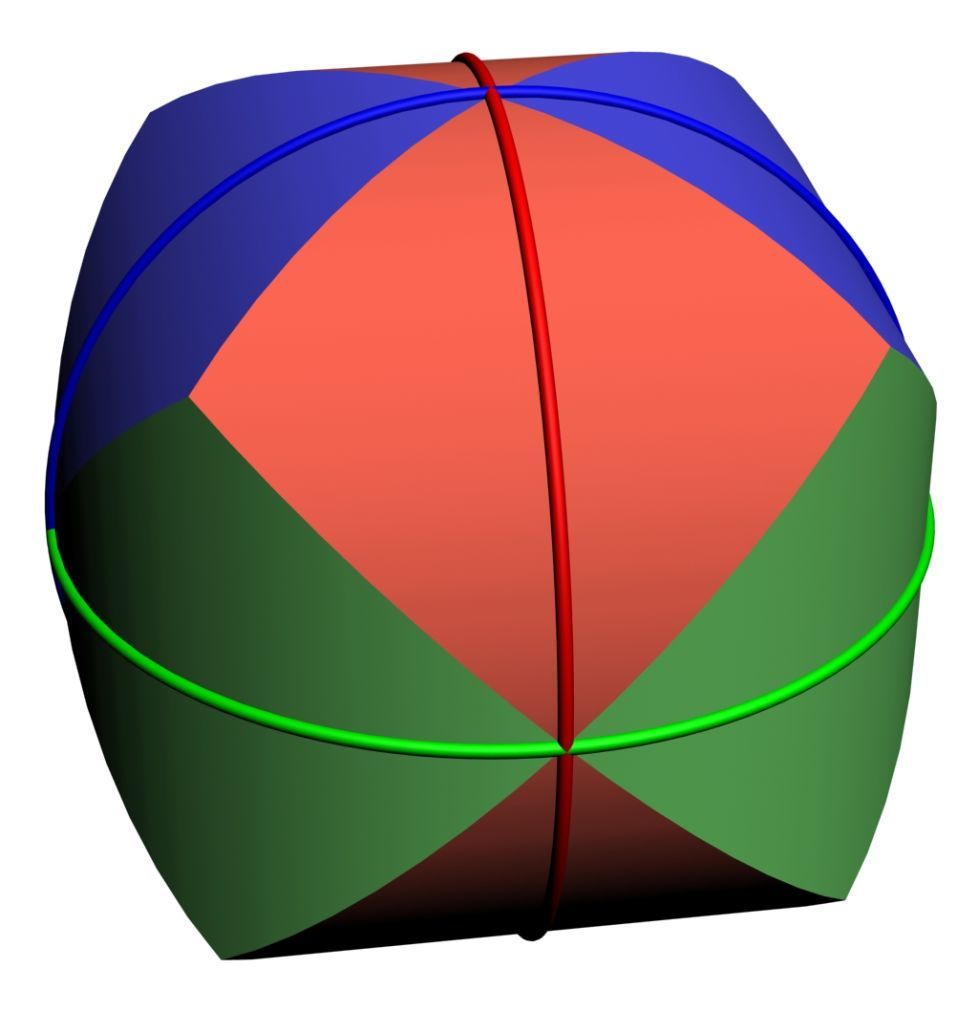


inscribed cube
In the scope of the circle rebramni not fit. And here - here:
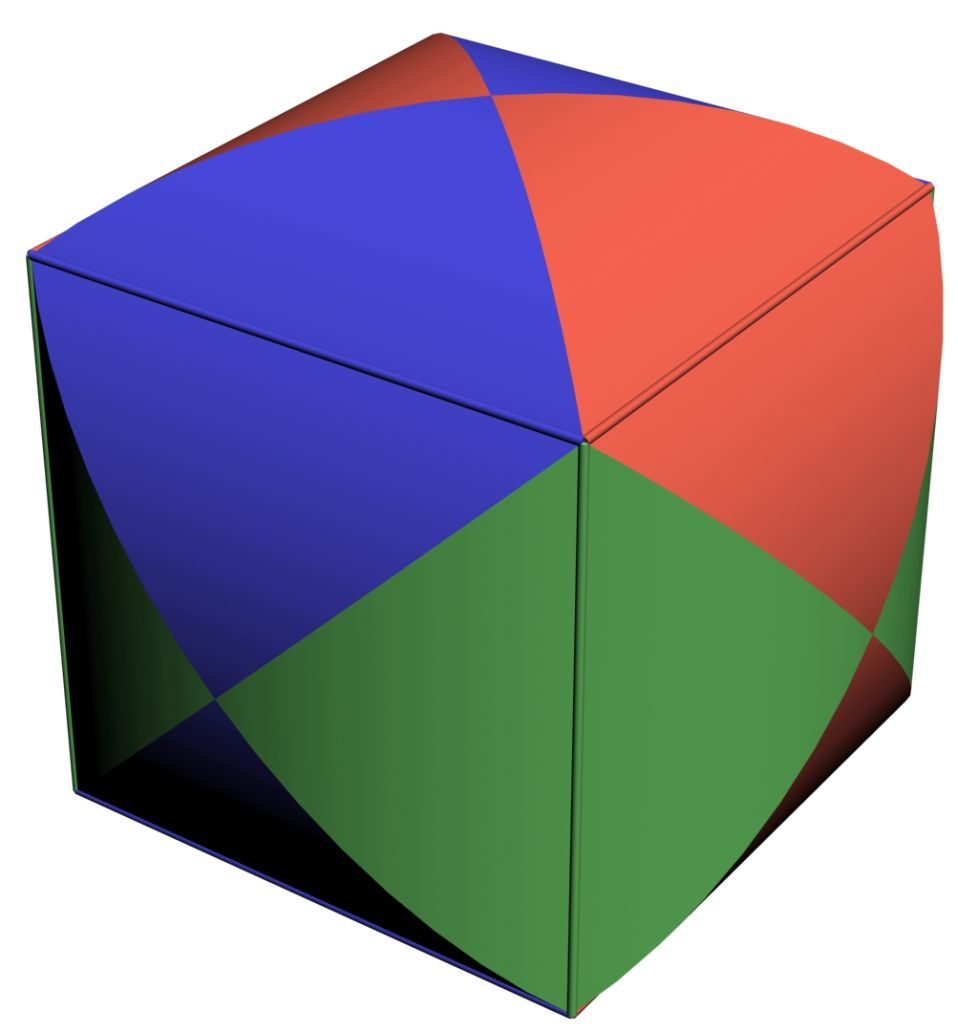
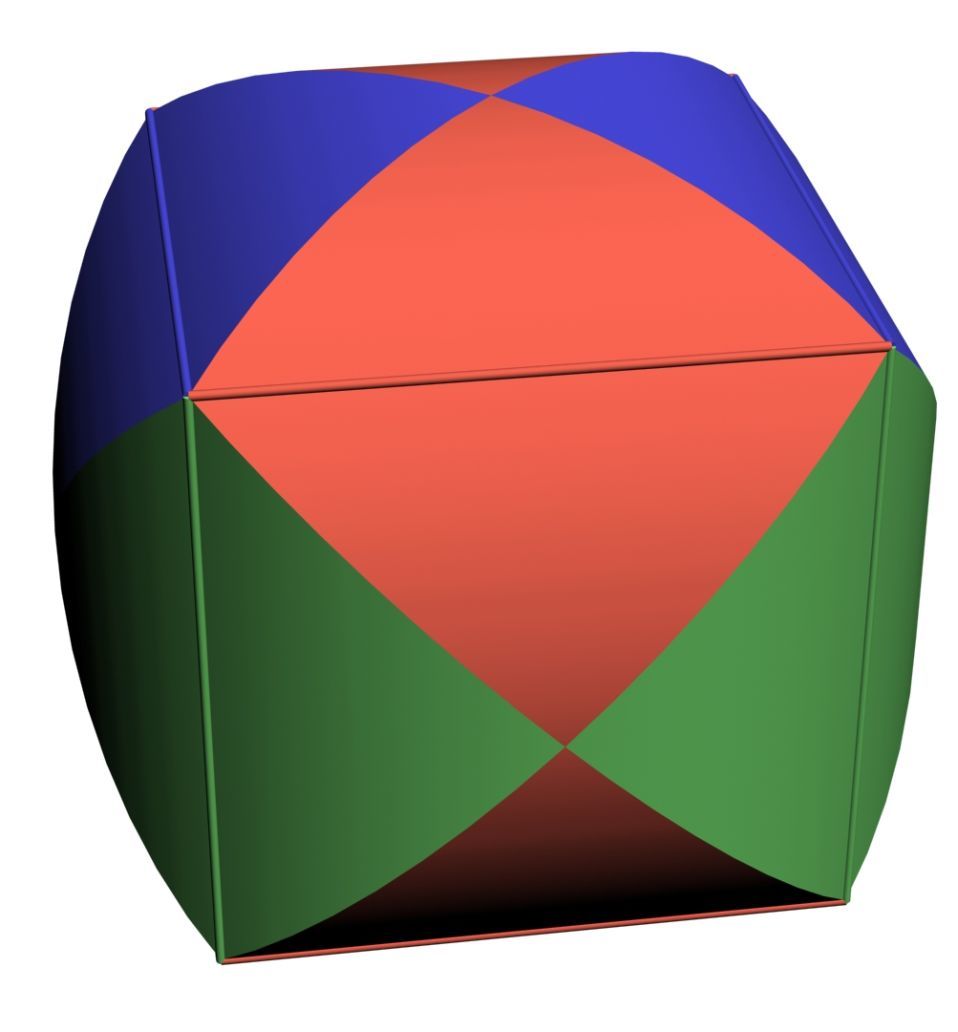


Cube and circles simultaneously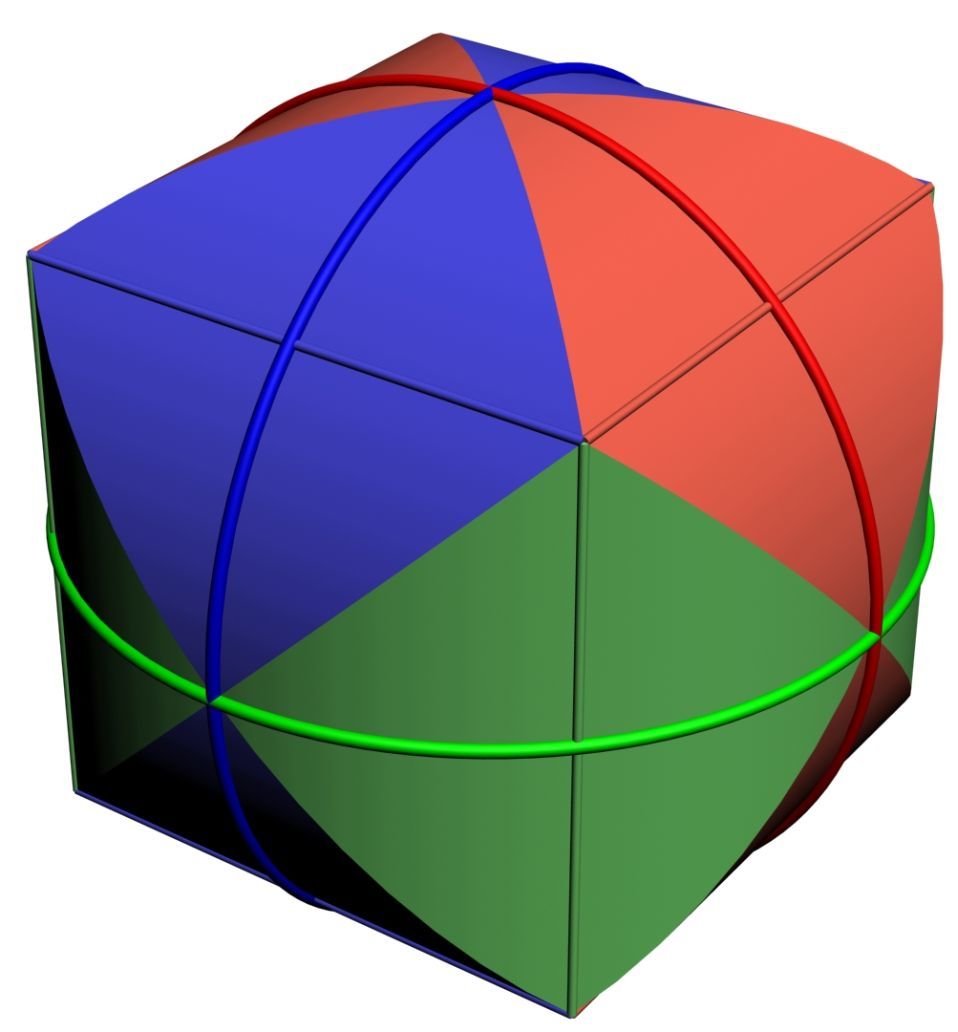
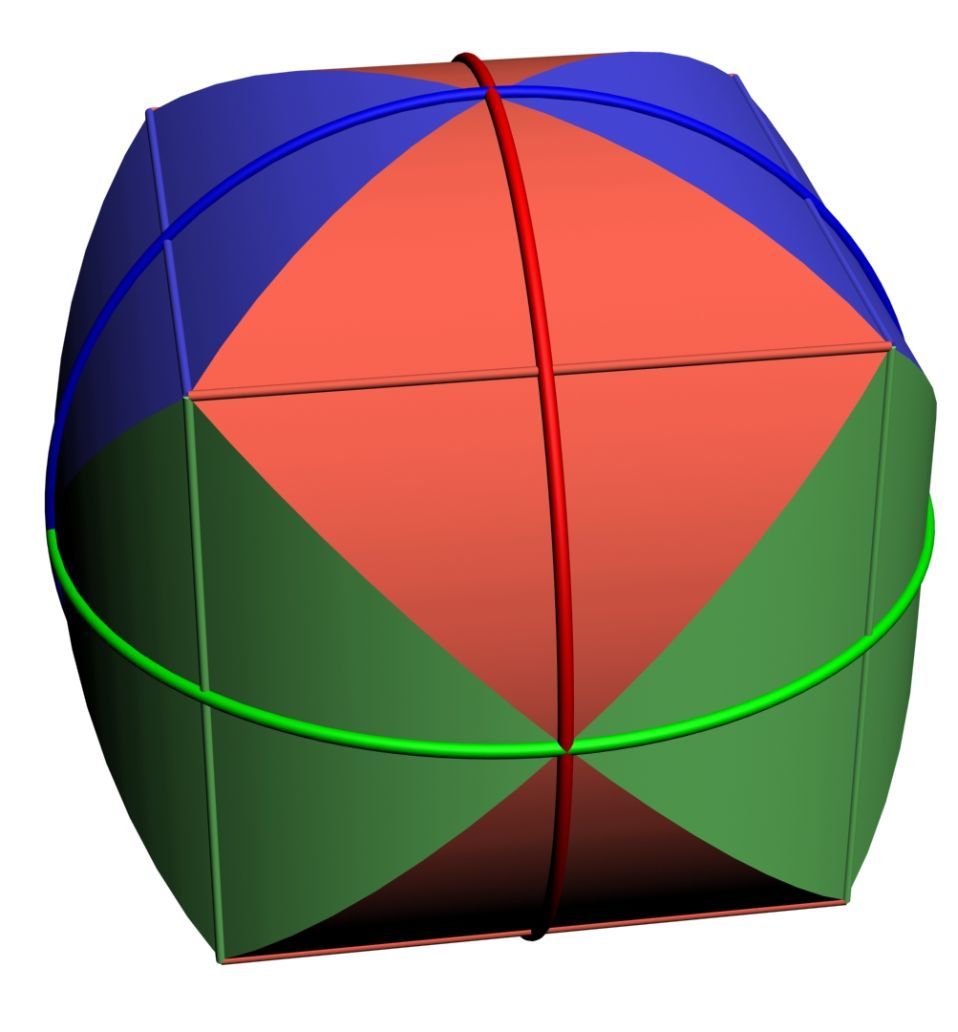


Required scope for clarity
The sphere of slightly larger diameter is for clarity, so it’s all inside, touching on those colored circles:
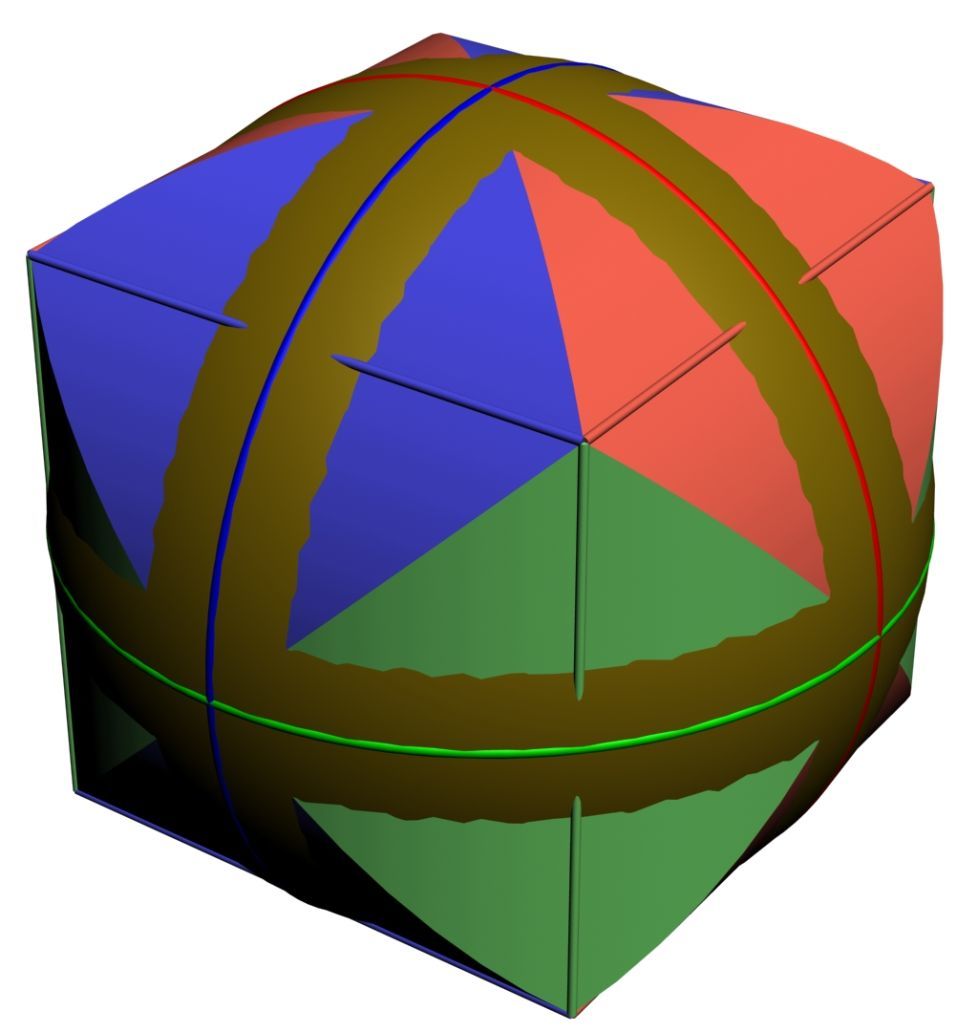
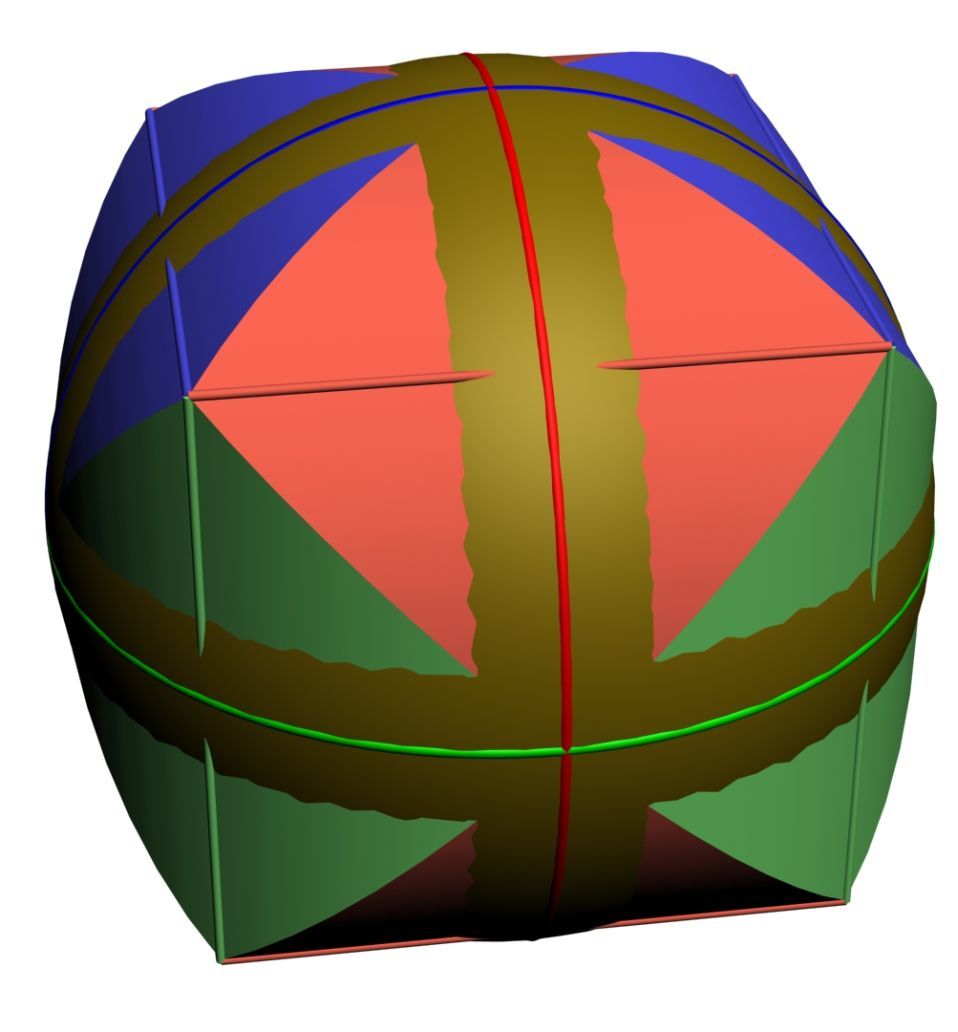


The last view with explanations
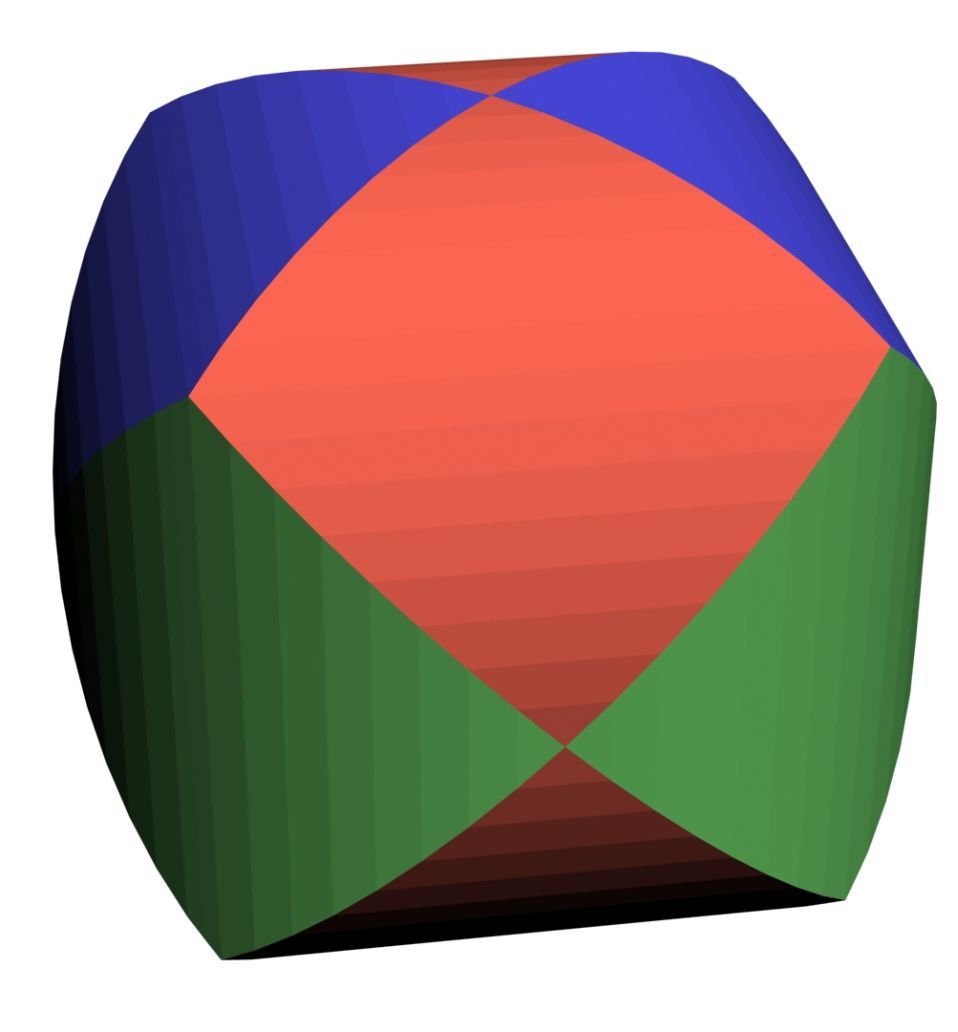
Each “petal” of this “kuboshar” / “sharosphere-cube” is a part of the corresponding color of the cylinder, cut off from it by the other two, the strokes along its axis. The stitching lines of these petals are those diagonals in the drawing of three projections.


Each “petal” of this “kuboshar” / “sharosphere-cube” is a part of the corresponding color of the cylinder, cut off from it by the other two, the strokes along its axis. The stitching lines of these petals are those diagonals in the drawing of three projections.
More pictures, but rather disturbing
It is “in wires” and with a transparent front, i.e. in color back from the observer surface from the inside.
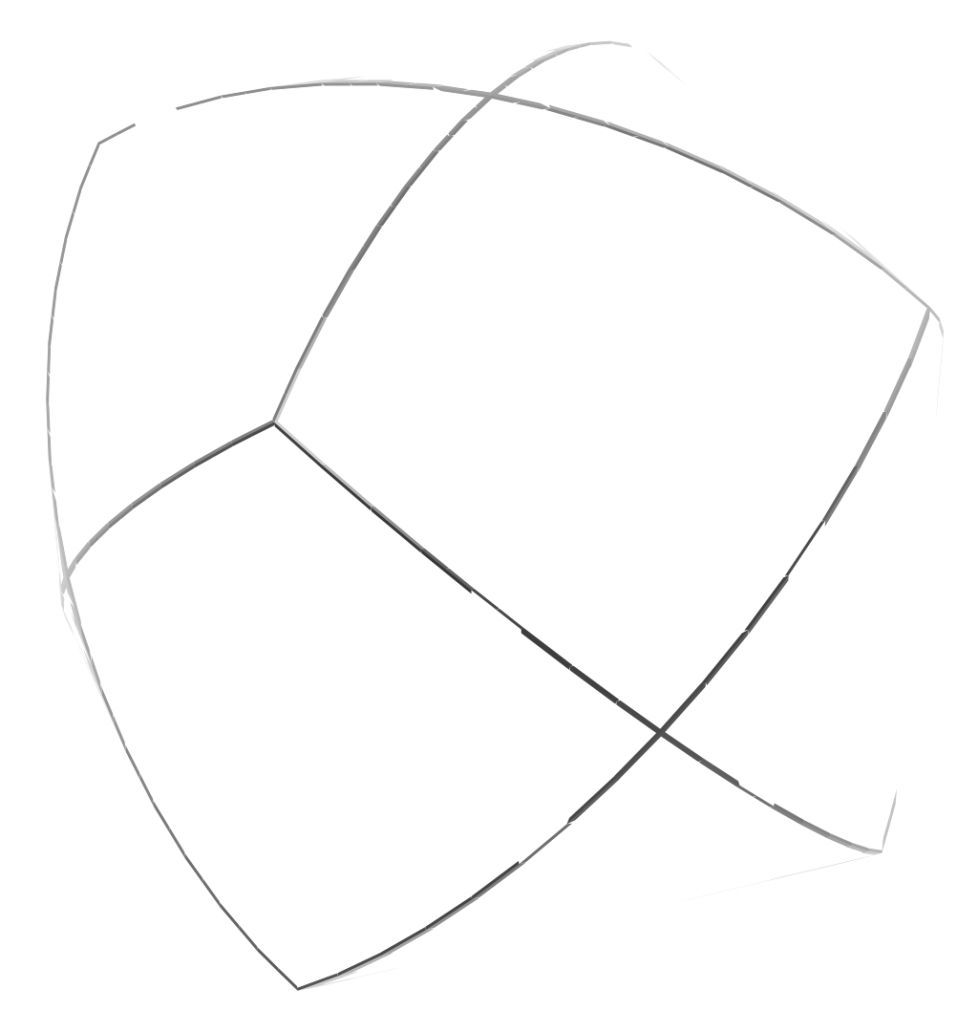



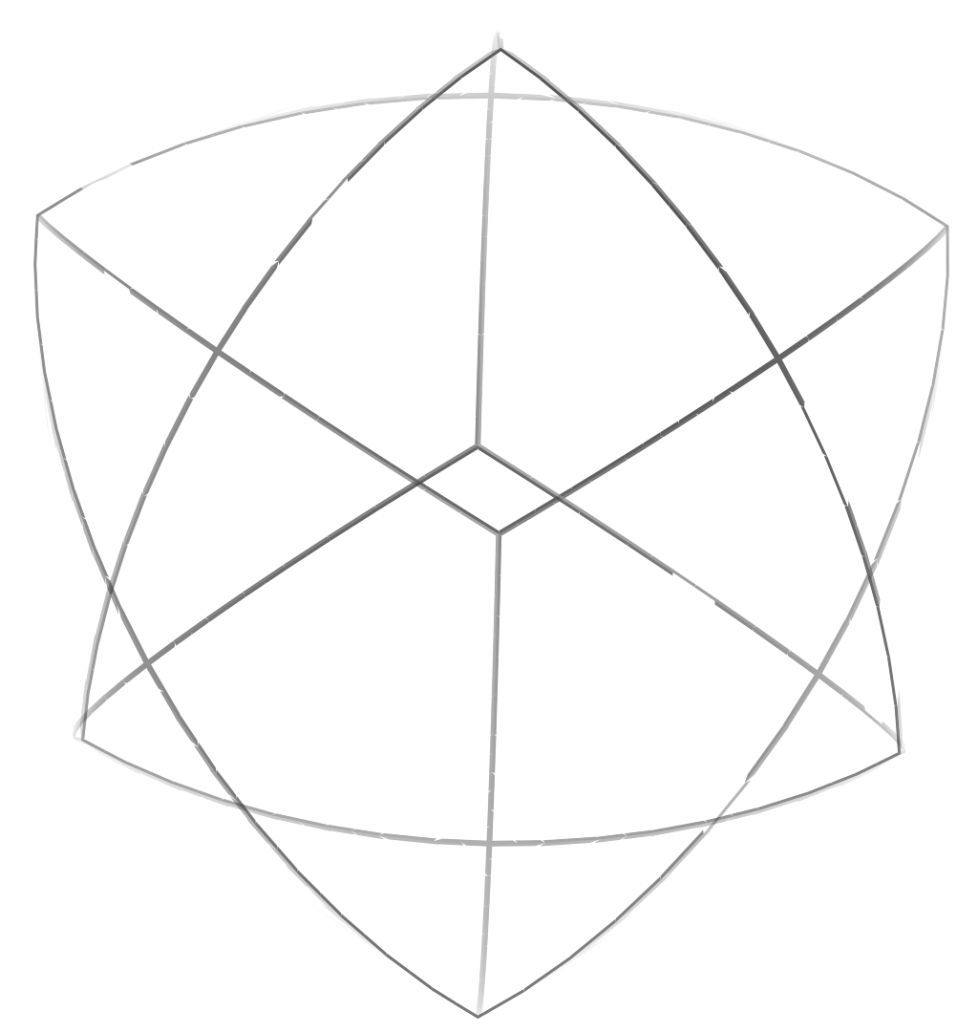





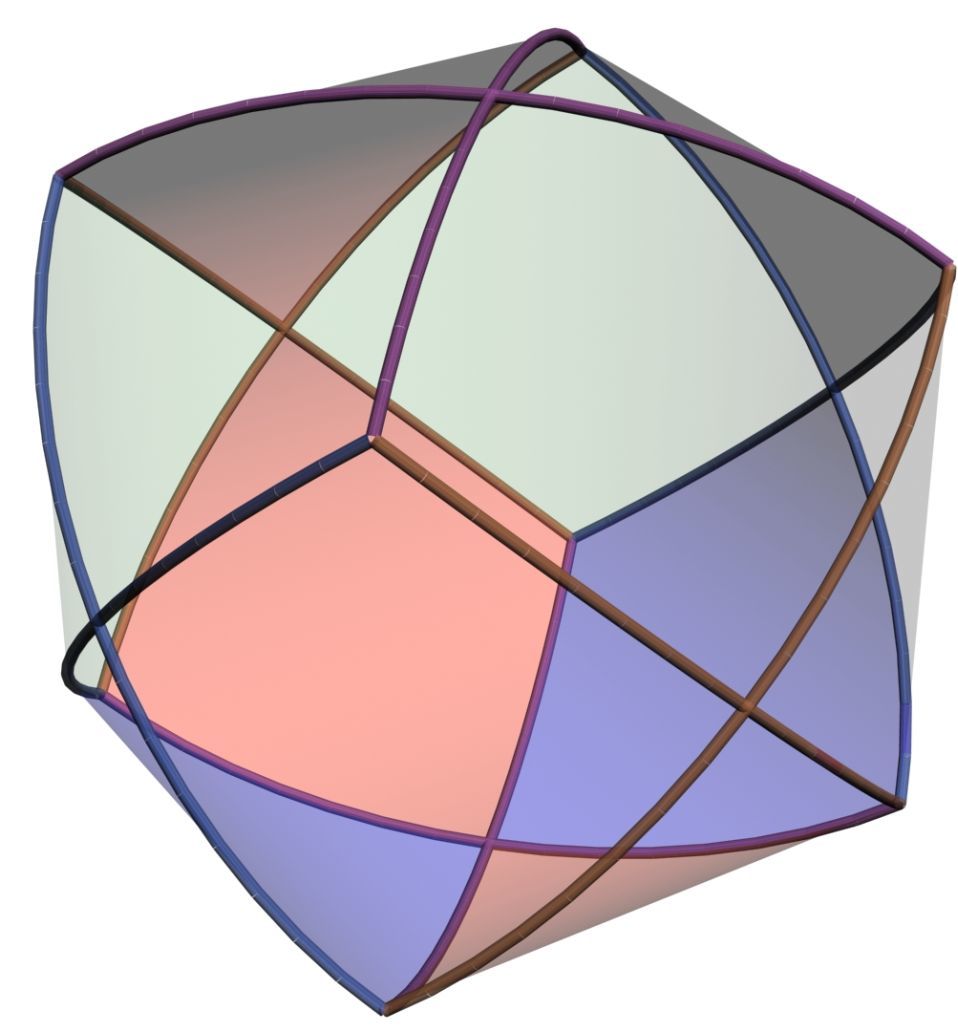

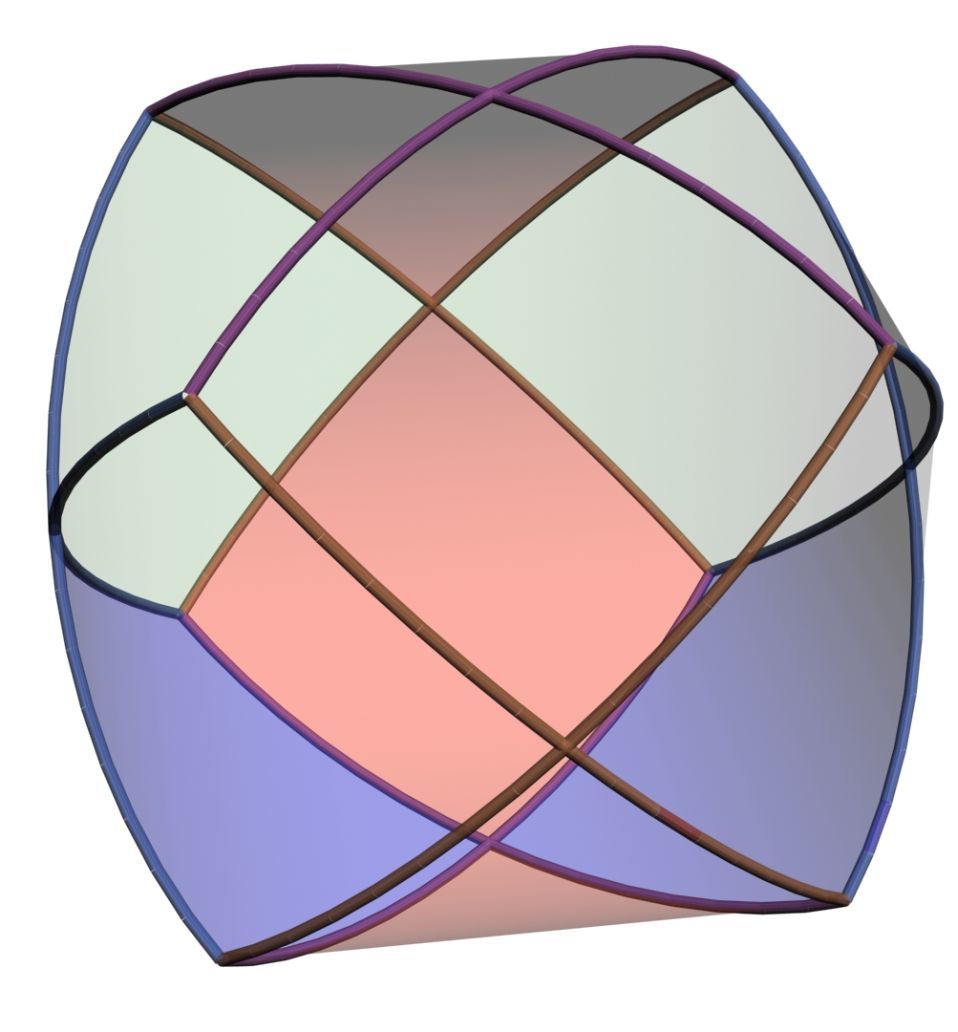













This is “how not to sew a soccer ball” - to the question how does “3d” differ from spatial thinking and whether it is necessary to teach it in school .
According to my observations, this seemingly simplest task is like from the “Bromberg memorandum”: “people will be divided ... according to an unknown sign to us ... into two strongly unequal parts ...” - for people older than 12 years, the result does not depend much on anything — and subjects of education, gender, age, hobby, etc. - The% of respondents correctly are very small and equipolar. That does not interfere with living it is not mastered. And those who understand the work of the parts of the shuttle of a sewing machine, knitting machine, axial internal combustion engine, roller shutter or kinematics of the airbus chassis are piece-specific people, special, there is no need for humanity. But even to them, it is easier to look at the flat scheme in the metro than to imagine the intricacies of the transition tunnels in the center.
Do not need spatial 3d man in the street. Unlike, for example, financial or (mat) statistical literacy.
Very interesting is the% of habra people who answered correctly right away, and the correlation with them is something, but curiosity is idle.
Well, a small survey, because I have prof. deformation:
UPD - PS I don’t know the name of this figure, but who imagines it for myself is usually phrases
hid what would bother to think
describe quickly and clearly. It is clear to those who also represent.type “bloated cube” / “ball with ears / corners”, “kuboshar”, “sharokub”
To draw by hand, in my opinion, not an artist is unrealistic.
UPD2 - as unlocked - added polls
Source: https://habr.com/ru/post/275707/
All Articles